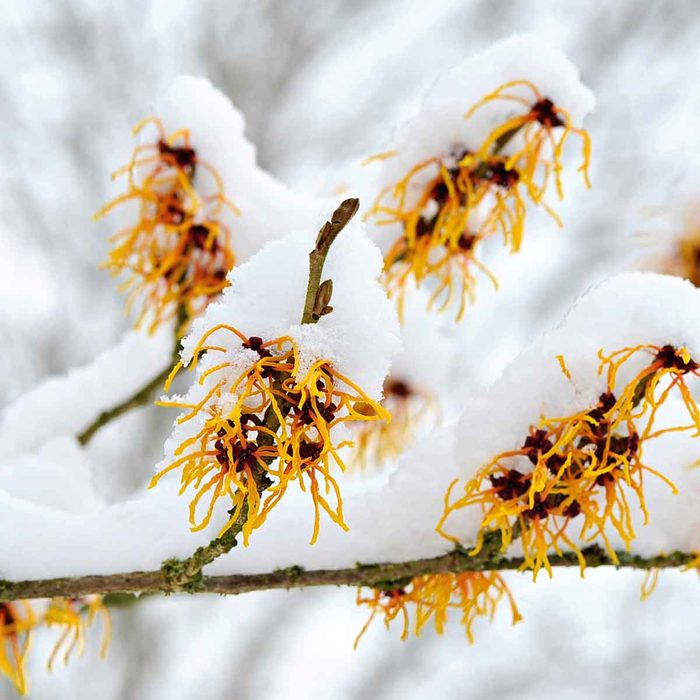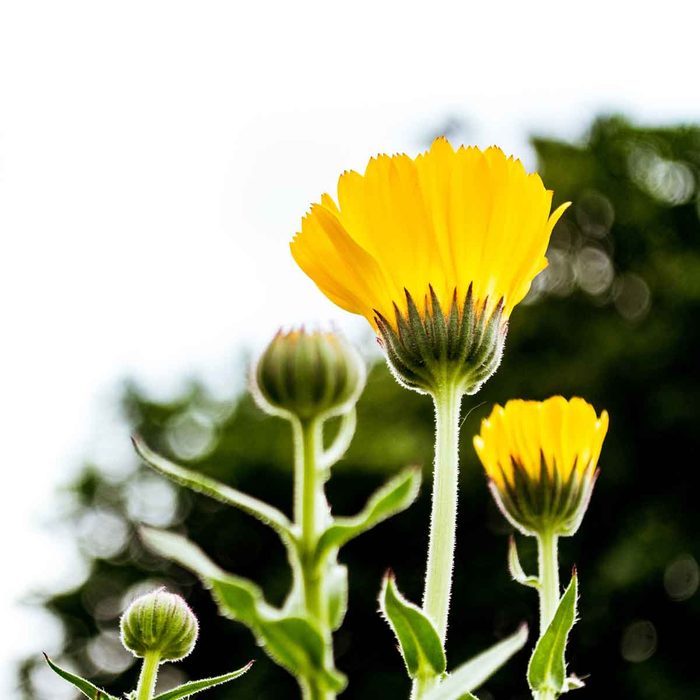
Calendulas
If you live in a part of the country with mild winters, try Calendulas. Yellow flowers beam with an inviting brightness. These daisy-like flowers come in shades of orange and yellow and thrive in cool weather. Another advantage Calendulas have is that you can grow them in containers or in a flower bed that gets plenty of sun.
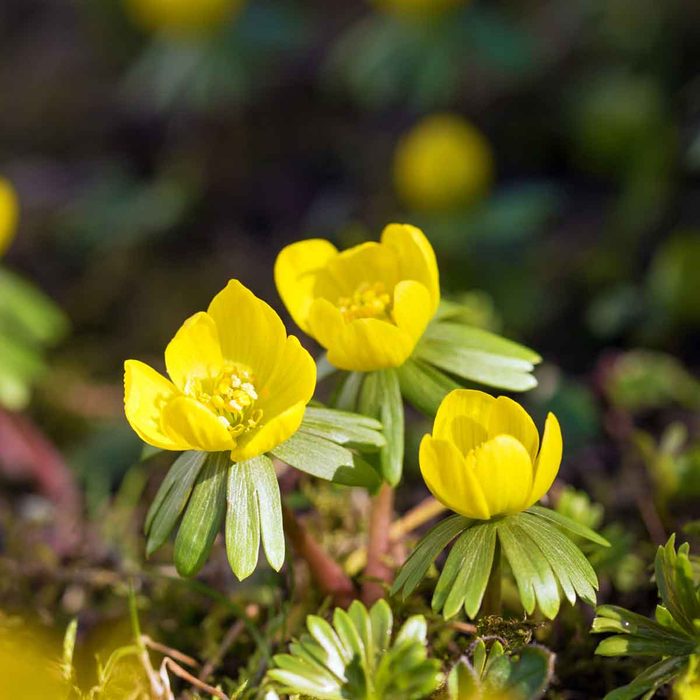
Winter Aconite
Winter aconite is a nature lover’s dream with its bright green leaves and yellow blossoms popping out amidst the snow. It grows from a bulb and often blooms during the late winter, growing about six inches tall. The Missouri Botanical Garden notes it does best in zones 3 – 7 and needs full sun to part shade.
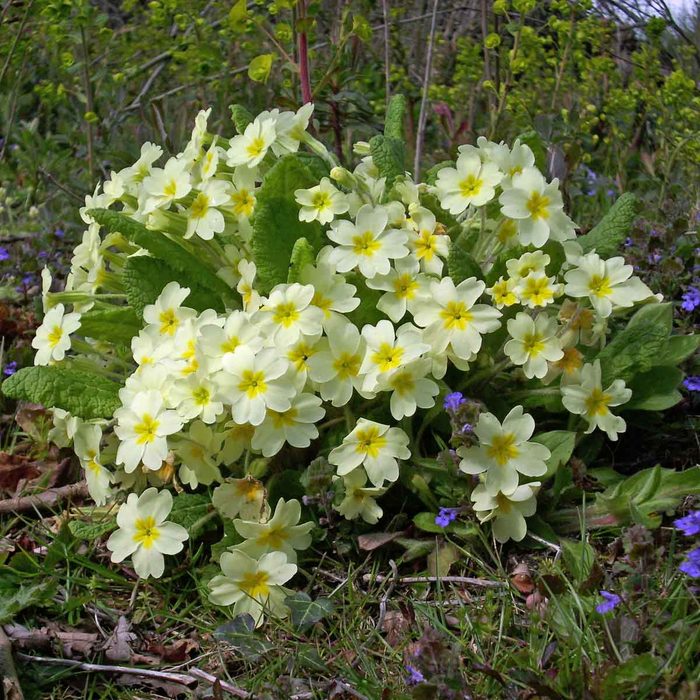
English Primrose
English primrose is easy to care for and gives a pop of color to winter gardens in mild climates. These winter plants have circular flowers in nearly every color. They aren’t large plants, but their dainty flowers pack a punch as one of the earliest bloomers. Penn State Extension notes they are relatively easy to maintain inside during the winter, and then you can transplant to your garden after the last hard frost.
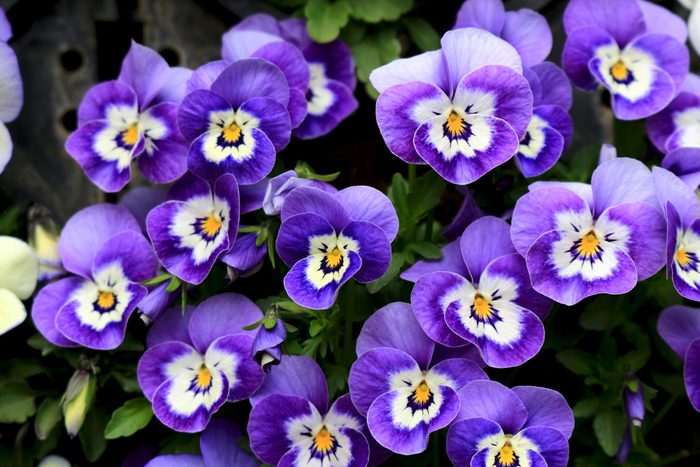
Winter Pansies
Add a bit of cheer to your garden with winter pansies. This winter blooming plant does well in hardiness zones 6 – 8 and comes in a variety of colors, from white to gold, orange, violet, red and maroon. “Pansies are a remarkable winter annual capable of surviving temperatures down to the single digits, freezing solid, then bouncing back with vigor when warm weather returns,” notes University of Georgia Extension.
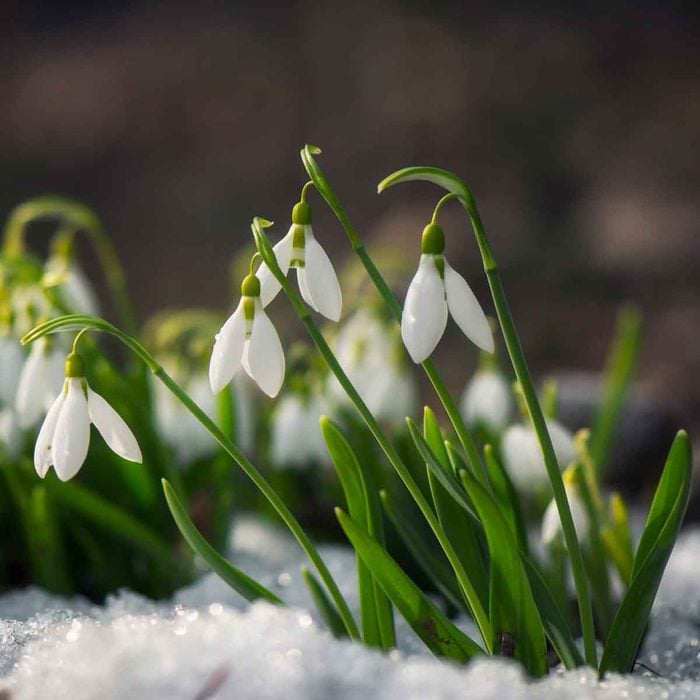
Snowdrops
In many parts of the country, snowdrops are one of the first spring flowers to bloom. Depending on the region, they can bloom as early as February, even when snow is still on the ground. These winter blooming plants are easy to grow, according to the Chicago Botanic Garden. Woodland settings are ideal. Snowdrop bulbs can remain undisturbed for many years and will multiply by themselves.
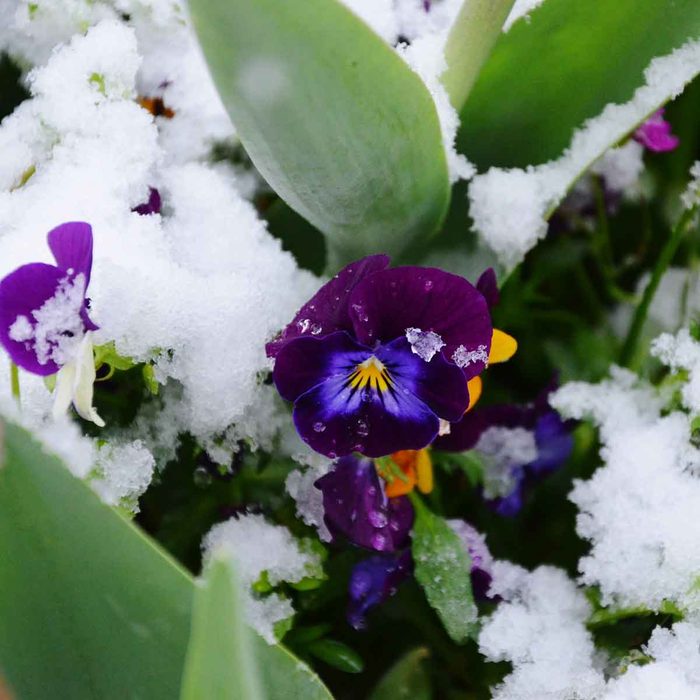
Violas
Brighten up those dull winter days with violas. These winter blooming flowers not only offer vibrant color and a sweet fragrance, they self-sow, so they’ll come back year after year. “Because violas are cool-weather-loving early-spring flowers, a layer of mulch over the soil around them can keep them happy and blooming later into the spring or early summer,” according to Costa Farms.
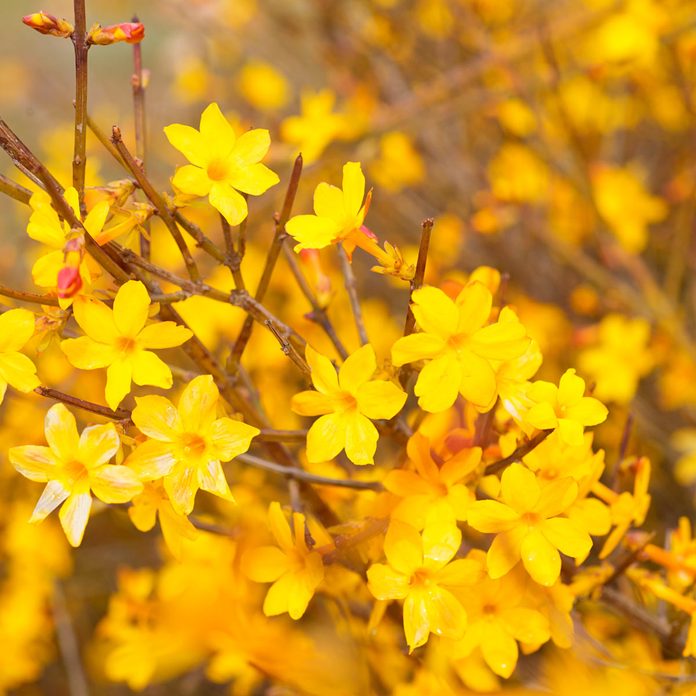
Winter Jasmine
Add some bright yellow flowers to your landscape in late winter with winter jasmine. These flowers start blooming on the first warm January day in regions with mild winters, according to the University of Arkansas Division of Agriculture. Jasmine vines can reach up to 4 feet high and do best in full sun.
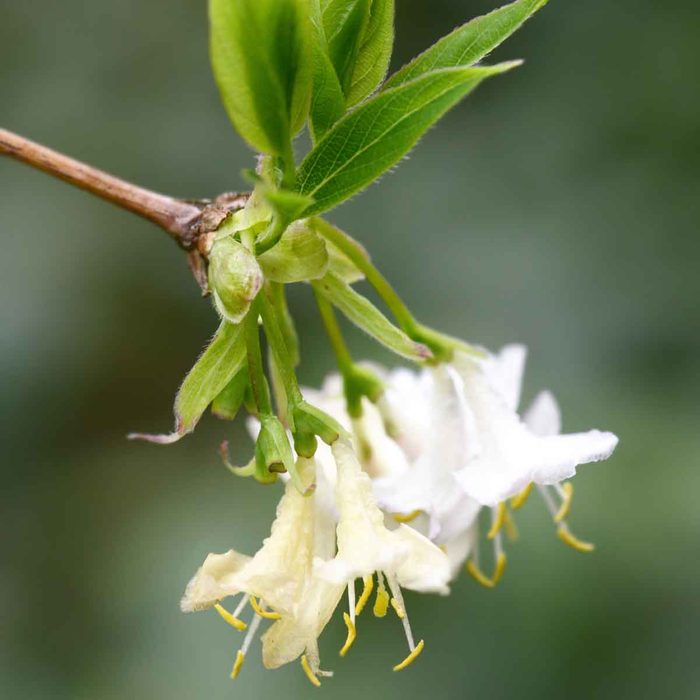
Winter Honeysuckle
Winter honeysuckle is a flowering shrub with a lemony scent and small white flowers that appear in mid to late winter. This plant does best in zones 4 – 8, according to North Caroline State Extension and can grow up to 9 feet high and 15 feet wide. “In addition to being a great ornamental, it is an excellent winter nectar source for honey bees and is effective for winter garden fragrance,” the extension notes.
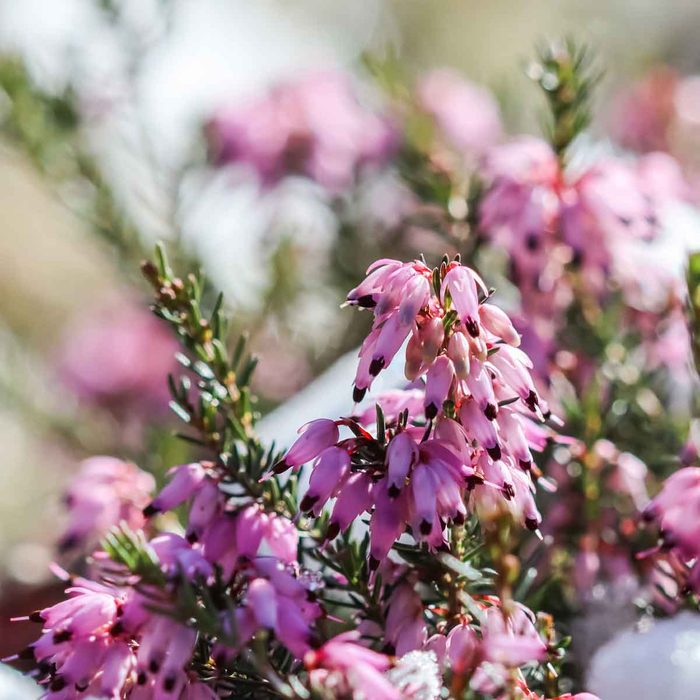
Winter Heath
Winter heath is a ground cover that tolerates cold temperatures and even snow. There are several varieties available and the colors of the bell-like flowers range from whites and pinks to reds and purples. These winter blooming plants grow best in zones 5 – 7 and in full sun to part shade, according to the Missouri Botanical Garden.

